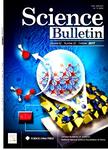版权所有:内蒙古大学图书馆 技术提供:维普资讯• 智图
内蒙古自治区呼和浩特市赛罕区大学西街235号 邮编: 010021

作者机构:Ministry of Education Key Laboratory for Earth System Modeling Center for Earth System Science Tsinghua University Joint Center for Global Change Studies U.S. Geological Survey Earth Resources Observation and Science (EROS) Center U.S. Geological Survey School of Geography and Planning and Guangdong Key Laboratory for Urbanization and Geo-simulation Sun Yat-sen University
出 版 物:《Science Bulletin》 (科学通报(英文版))
年 卷 期:2016年第61卷第21期
页 面:1651-1661页
核心收录:
学科分类:081603[工学-地图制图学与地理信息工程] 081802[工学-地球探测与信息技术] 07[理学] 08[工学] 070503[理学-地图学与地理信息系统] 0818[工学-地质资源与地质工程] 09[农学] 0903[农学-农业资源与环境] 0705[理学-地理学] 083306[工学-城乡规划管理] 0816[工学-测绘科学与技术] 0833[工学-城乡规划学]
基 金:partially supported by the National Natural Science Foundation of China (41301445) Research Grant from Tsinghua University (20151080351) a Meteorological Public Benefit project of China (GYHY201506010)
主 题:LULC modeling Spatial downscaling RCP scenarios Urban expansion
摘 要:Global climate and environmental change studies require detailed land-use and land-cover (LULC) information about the past, present, and future. In this paper, we discuss a methodology for downscaling coarse-resolution (i.e., half-degree) future land use scenarios to finer (i.e., 1 km) resolutions at the global scale using a grid-based spatially explicit cellular automata (CA) model. We account for spatial heterogeneity from topography, climate, soils, and socioeconomic variables. The model uses a global 30 m land cover map (2010) as the base input, a variety of biogeographic and socioeconomic variables, and an empirical analysis to downscale coarse-resolution land use information (specifically urban, crop and pasture). The output of this model offers the most current and finest-scale future LULC dynamics from 2010 to 2100 (with four representative concentration pathway (RCP) scenarios--RCP 2.6, RCP 4.5, RCP 6.0, and RCP 8.5) at a 1 km resolution within a globally consistent framework. The data are freely available for download, and will enable researchers to study the impacts of LULC change at the local scale.